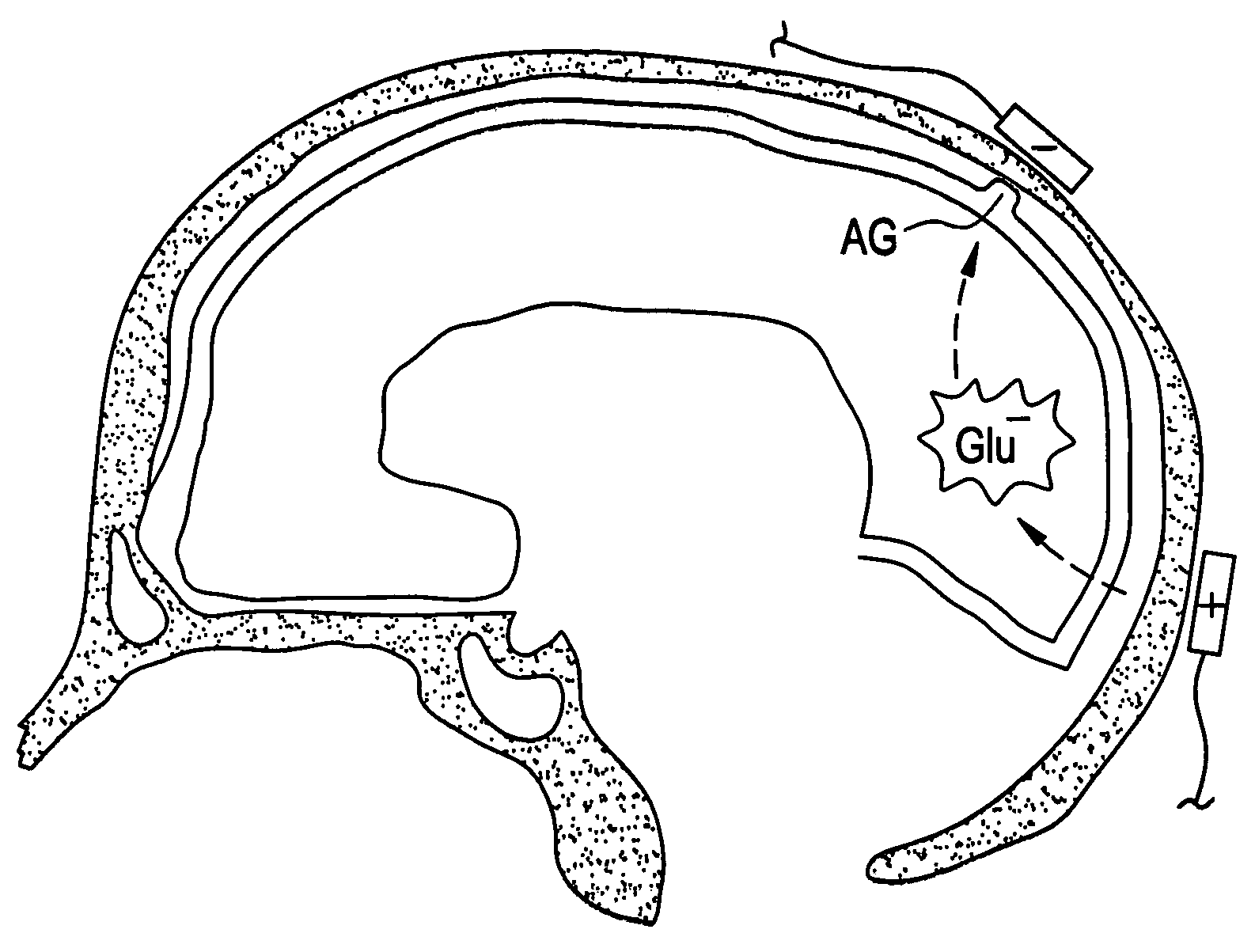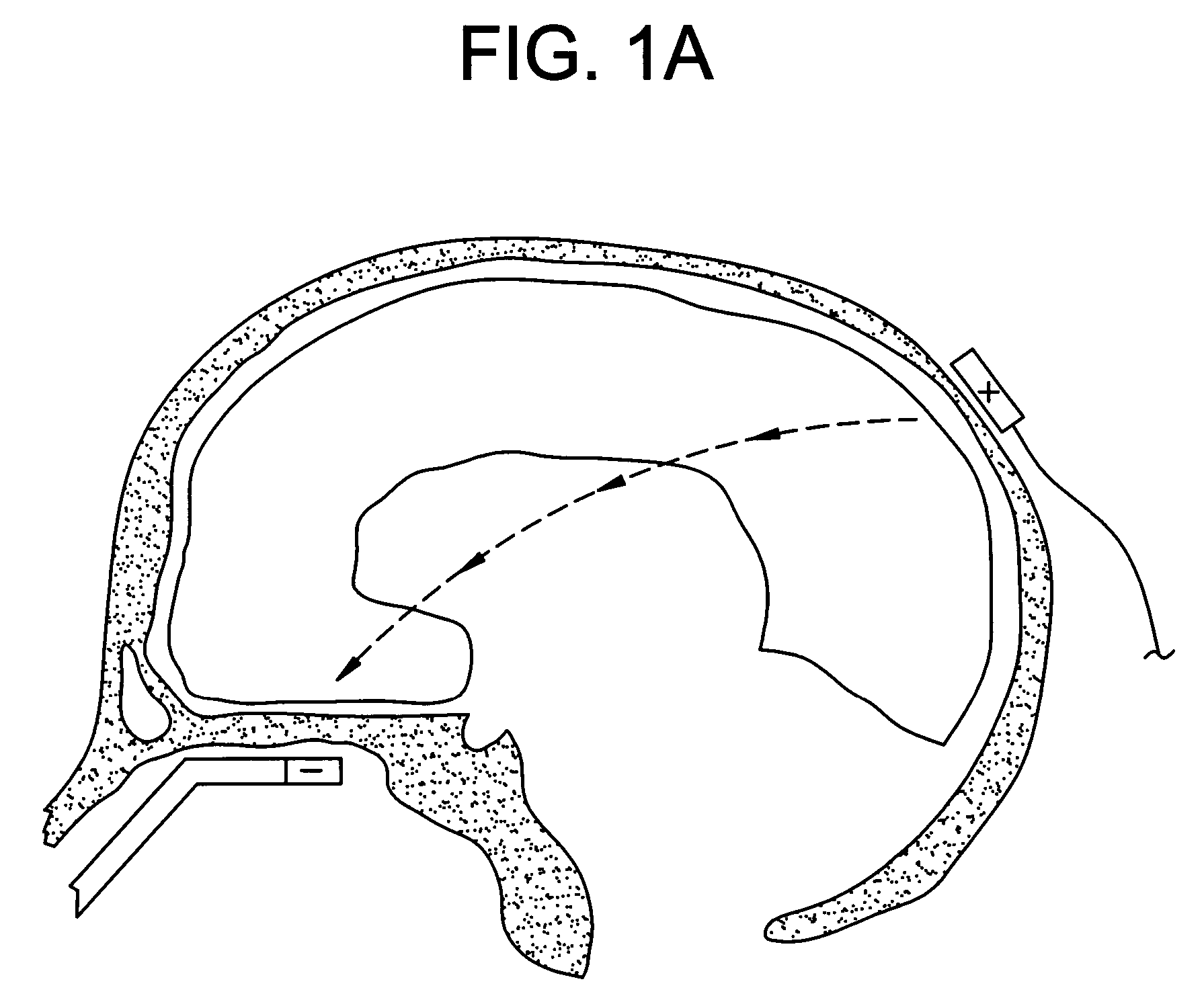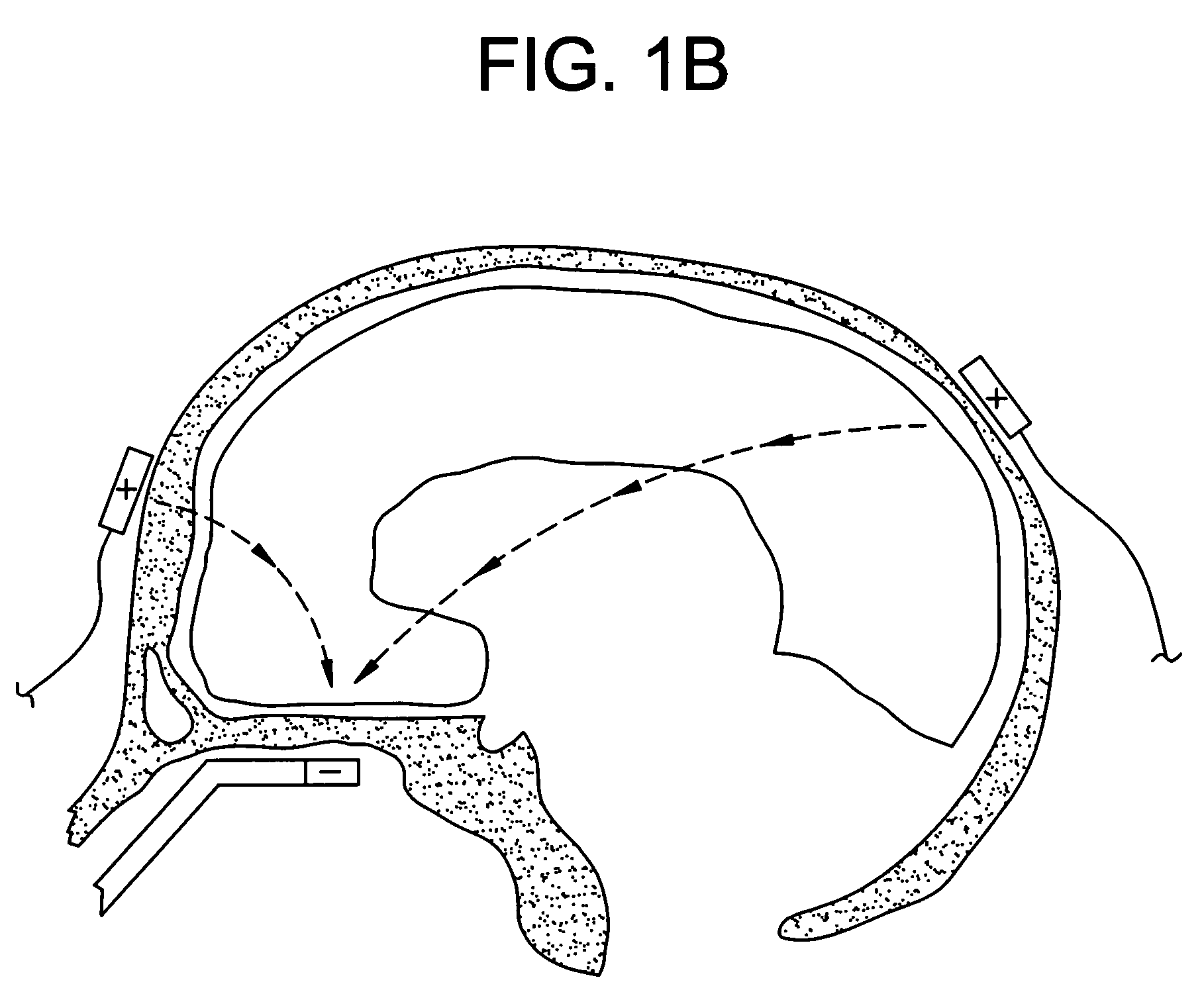Method of removing deleterious charged molecules from brain tissue
a brain tissue and charged molecule technology, applied in electrotherapy, therapy, etc., can solve the problems of systemic toxicity, significant discomfort, deleterious levels of heavy metals in the brain,
- Summary
- Abstract
- Description
- Claims
- Application Information
AI Technical Summary
Benefits of technology
Problems solved by technology
Method used
Image
Examples
Embodiment Construction
[0033]Now referring to FIG. 13, there is provided a saggital cross section of a brain afflicted with Alzheimer's Disease. In general, the disease often begins in the hippocampus, spreads to the amygdala, and proceeds anteriorly to the prefrontal cortex and posteriorly as well.
[0034]Now referring to FIG. 14, the cribriform plate CP is a wafer-thin ledge of porous bony tissue located beneath the prefrontal cortex portion of the brain and above the nasal cavity. The porosity of the cribriform plate is filled with olfactory nerves extending from the olfactory bulb OB (located at the lower base of the brain) and terminating within the nasal mucosa. As shown here, the cribriform plate has a thickness of about 1 mm while the olfactory bulb has a thickness of about 3 mm.
[0035]Now referring to FIG. 15, the coronal view of the cribriform plate reveals that fairly large throughholes extend transversely through about one-half of the cribriform plate. These throughholes comprises about 50 areal ...
PUM
 Login to View More
Login to View More Abstract
Description
Claims
Application Information
 Login to View More
Login to View More - R&D
- Intellectual Property
- Life Sciences
- Materials
- Tech Scout
- Unparalleled Data Quality
- Higher Quality Content
- 60% Fewer Hallucinations
Browse by: Latest US Patents, China's latest patents, Technical Efficacy Thesaurus, Application Domain, Technology Topic, Popular Technical Reports.
© 2025 PatSnap. All rights reserved.Legal|Privacy policy|Modern Slavery Act Transparency Statement|Sitemap|About US| Contact US: help@patsnap.com



